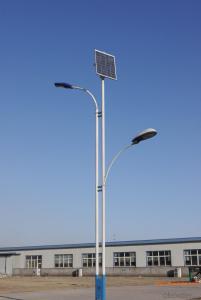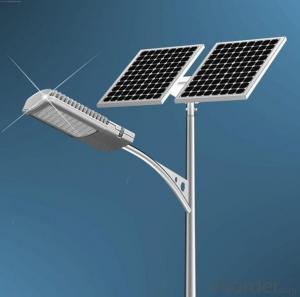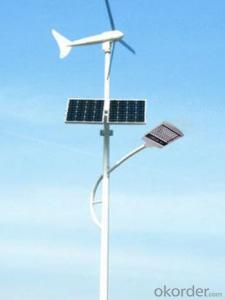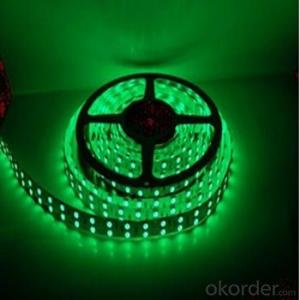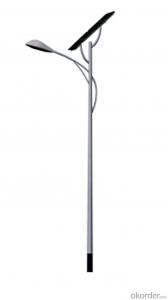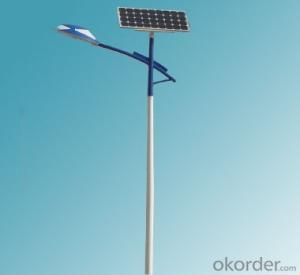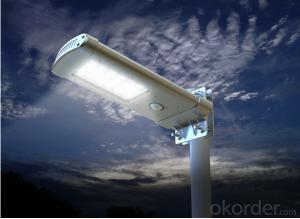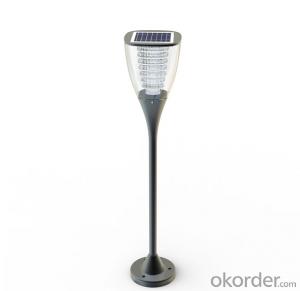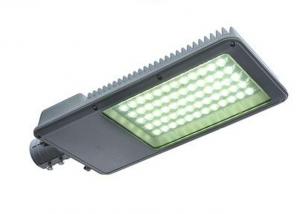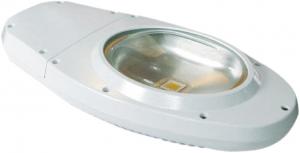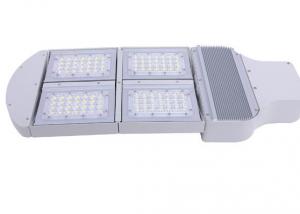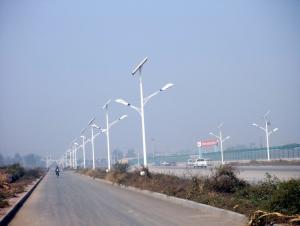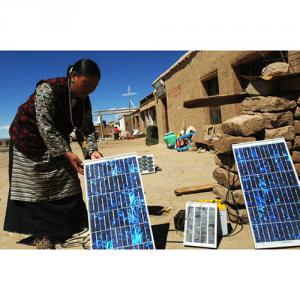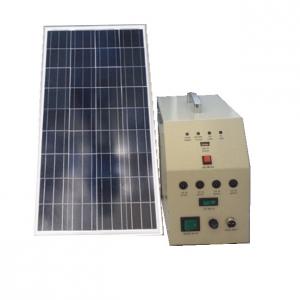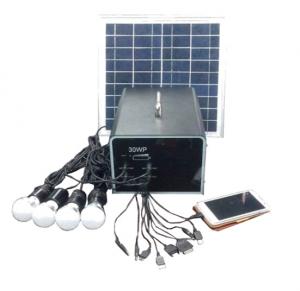Solar street lamps solar street light environmental friendly, cost saving,
- Loading Port:
- Ningbo
- Payment Terms:
- TT OR LC
- Min Order Qty:
- 1 set
- Supply Capability:
- 5000 set/month
OKorder Service Pledge
OKorder Financial Service
You Might Also Like
Step 1 – Find area in need of street lights
The first thing to figure out is the length of road in need of street lights. This can be a small entrance road only a couple hundred of feet long to miles of streets through an area. Does the area currently have any type of lighting available? What is the reason for needing street lights in this area?
Step 2 – Find out if electric is available
Is the electrical grid already nearby or would you need to call in the power company to bring in electrical lines? If the electric needs to be brought to the area, how much is this going to cost? Depending on how far the grid electric is from the location of the needed lighting, this can be quite expensive.
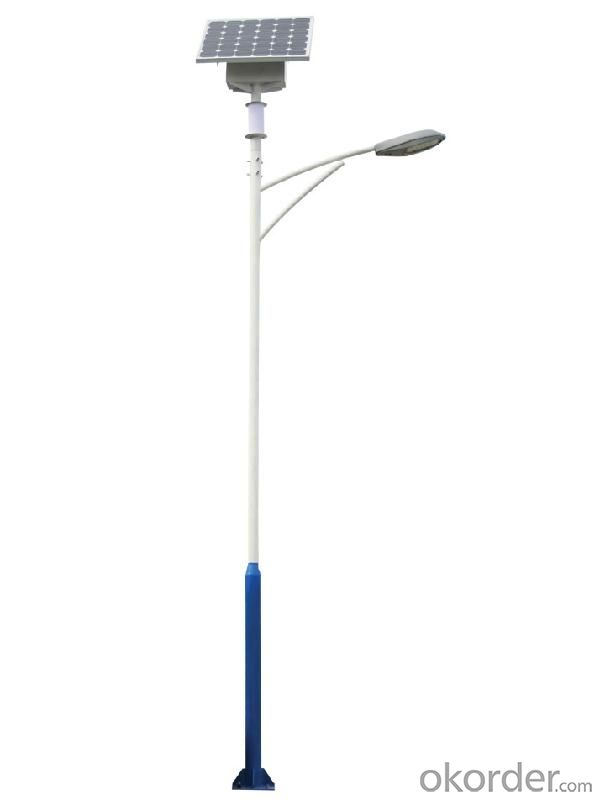
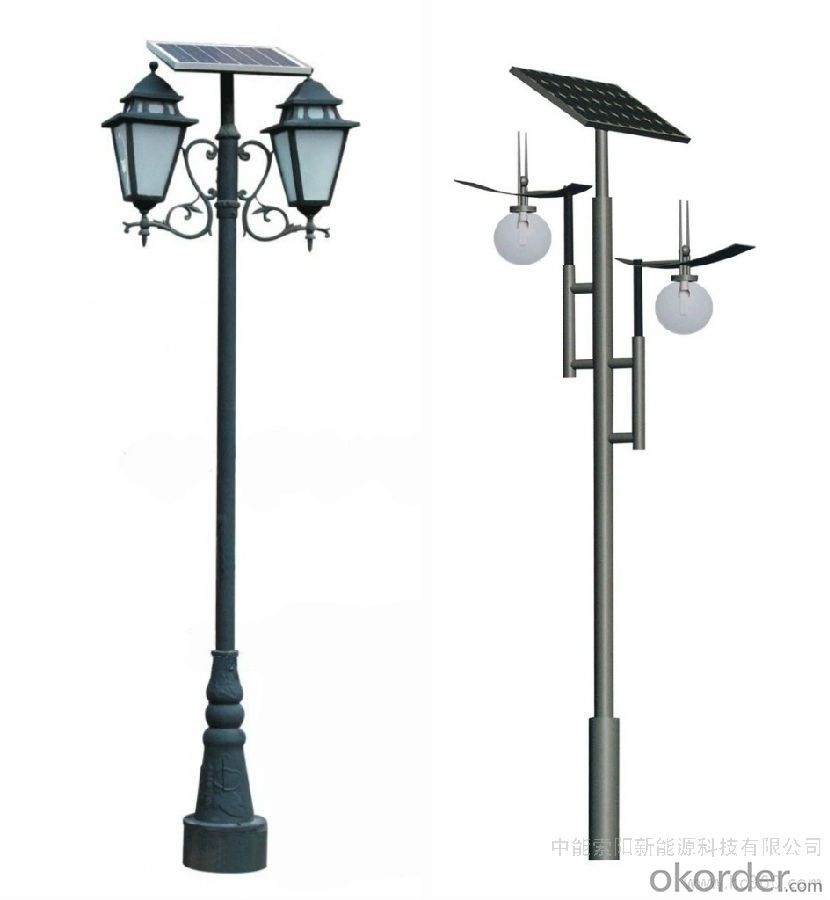
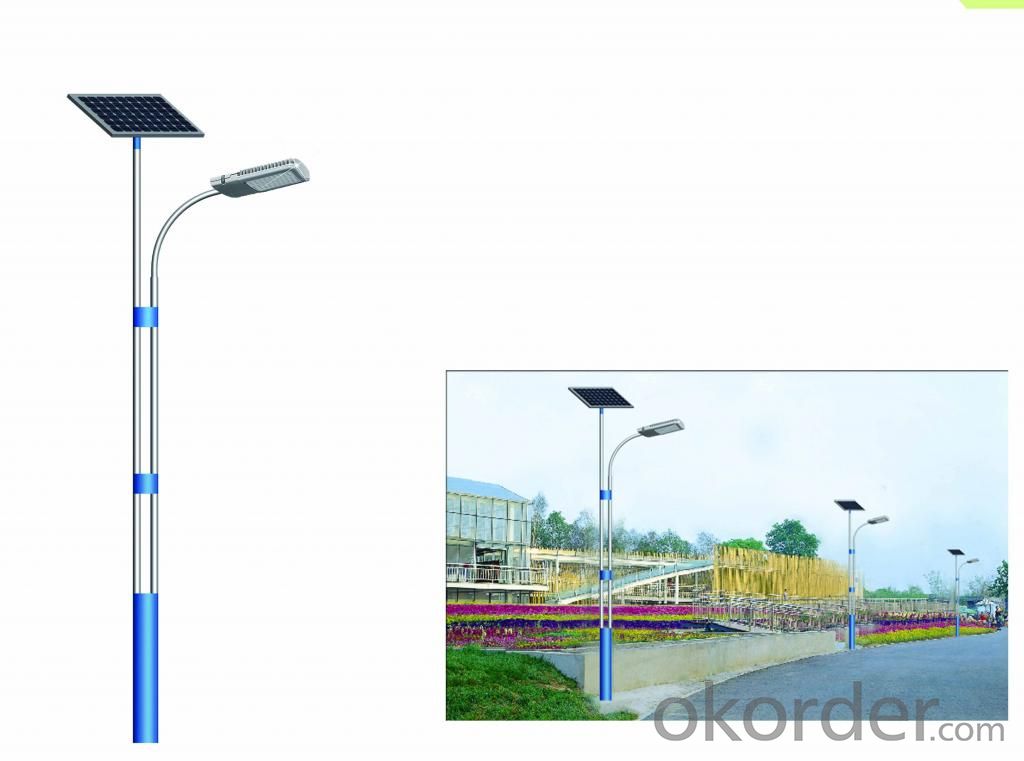
Step 3 – Determine the lighting requirements
How much lighting is needed on the street? Do the lights need to be dark sky compliant? Do the street lights need to run from dusk to dawn or for only a specified number of hours at night? Are the street lights able to dim in the middle of the night and still provide enough lighting? These questions need to be answered before you can decide on how many lights you will need to complete the project.
Step 4 – Find all alternatives
Solar power street lights are an option to traditional electrical lights. Solar street lights do not need the electrical grid to be brought in as they are self-contained units that provide their own electric provide the best lighting solution by using lower amounts of power, better optics, dimming features where needed, and cost less in an overall solution.
Step 5 – Contact companies for quotes
The last step after gathering the above information is to contact companies for quotes. Just like with anything else, get multiple quotes and weigh the pros and cons of every company and situation. The lowest quote is not always the best, so make sure to do your research on companies and products before you submit a purchase order.
If you take your time, do your research, and gather needed requirements, your next street lighting project will be a success. Never be afraid to ask a lot questions, they may save you time and money in the long run.
- Q:Can solar lights be used in rural areas?
- Yes, solar lights can be used in rural areas. In fact, solar lights are often an excellent lighting solution for rural areas that may not have access to electricity. Since rural areas typically have abundant sunlight, solar lights can harness this energy and convert it into electricity to power the lights. This eliminates the need for costly and inconvenient electrical infrastructure, making solar lights a practical and sustainable option for rural communities. Additionally, solar lights are easy to install and maintain, and they are often more affordable in the long run compared to traditional lighting systems. They can provide a reliable source of light for rural households, schools, and community centers, improving safety, enhancing productivity, and enabling access to essential services even after the sun goes down.
- Q:What is the output power of solar lights?
- The output power of solar lights varies depending on the specific model and manufacturer. However, most solar lights typically have an output power ranging from 1 to 30 watts.
- Q:Are solar lights compatible with timers and remote controls?
- Indeed, timers and remote controls can be used in conjunction with solar lights. Numerous solar lights are equipped with built-in timers that enable you to program precise on and off times for the lights, thereby automating the process. These timers can be set to activate the lights at dusk and deactivate them at dawn, or at any other specific time to suit your preferences. Moreover, certain solar lights can be managed remotely by means of a remote control device. This grants you the ability to conveniently adjust the brightness, alter the lighting mode, or turn the lights on and off from a distance. Consequently, whether you seek to streamline your lighting schedule or enjoy the convenience of remote control, solar lights can effortlessly integrate with timers and remote controls, affording you greater authority and adaptability.
- Q:Are solar lights suitable for use in wildlife reserves?
- Yes, solar lights are suitable for use in wildlife reserves. Wildlife reserves are often located in remote areas without access to electricity, making solar lights an ideal solution for providing lighting in these areas. Solar lights are powered by the sun, which means they do not rely on the grid and are environmentally friendly. They also do not require any wiring or complicated installation, making them easy to install and maintain in the vast areas of wildlife reserves. Additionally, solar lights have no emissions or noise, which makes them less disruptive to wildlife and their habitat. These lights can be strategically placed along pathways, camping grounds, or near observation points to enhance safety and security for both visitors and wildlife. Furthermore, solar lights usually have motion sensors, which can help to deter wildlife from approaching certain areas, thus minimizing the risk of disturbance or conflicts with humans. Overall, solar lights are a great choice for illuminating wildlife reserves, as they provide sustainable and efficient lighting solutions while minimizing their impact on the environment and wildlife.
- Q:How do you choose the right solar light manufacturer?
- When choosing the right solar light manufacturer, it is important to consider several factors. Firstly, research the manufacturer's reputation and experience in the industry. Look for customer reviews and ratings to gauge the quality of their products. Secondly, examine their range of solar lights to ensure they offer a variety of options to suit your specific needs. Additionally, consider the manufacturer's warranty and after-sales service, as this reflects their commitment to customer satisfaction. Lastly, compare prices and ensure that the manufacturer provides competitive pricing without compromising on the quality of their solar lights.
- Q:Are solar lights suitable for historical buildings?
- Yes, solar lights are suitable for historical buildings. They provide a sustainable and cost-effective lighting solution that does not require any external electrical connections or extensive wiring. Solar lights can be easily installed and do not disrupt the architectural integrity of historical buildings. Additionally, they offer flexibility in placement and can be adjusted to highlight specific architectural features or pathways, enhancing the overall aesthetics of the building while preserving its historical value.
- Q:Can solar lights be used in areas with high levels of dust storms or sandstorms?
- Yes, solar lights can be used in areas with high levels of dust storms or sandstorms. However, it is important to choose solar lights that are specifically designed to withstand such harsh conditions. These lights should have features like sealed components, durable materials, and protective covers to prevent sand or dust from entering the light and causing damage. Additionally, regular maintenance and cleaning may be required to ensure optimal performance in dusty environments. Overall, with the right selection and proper care, solar lights can effectively function in areas prone to dust storms or sandstorms.
- Q:Do solar lights have adjustable lighting modes?
- Yes, many solar lights have adjustable lighting modes that allow users to choose between different levels of brightness or lighting patterns.
- Q:Are solar lights suitable for commercial use?
- Yes, solar lights are suitable for commercial use. They are cost-effective, environmentally friendly, and provide reliable lighting solutions for various commercial applications such as parking lots, signage, pathways, and outdoor areas. Solar lights offer a sustainable and long-term lighting option, reducing electricity costs and promoting green initiatives for businesses.
- Q:Do solar lights have a motion sensor option?
- Yes, many solar lights do have a motion sensor option. This feature allows the light to automatically turn on when it detects movement nearby, providing added security and convenience.
1. Manufacturer Overview |
|
|---|---|
| Location | |
| Year Established | |
| Annual Output Value | |
| Main Markets | |
| Company Certifications | |
2. Manufacturer Certificates |
|
|---|---|
| a) Certification Name | |
| Range | |
| Reference | |
| Validity Period | |
3. Manufacturer Capability |
|
|---|---|
| a)Trade Capacity | |
| Nearest Port | |
| Export Percentage | |
| No.of Employees in Trade Department | |
| Language Spoken: | |
| b)Factory Information | |
| Factory Size: | |
| No. of Production Lines | |
| Contract Manufacturing | |
| Product Price Range | |
Send your message to us
Solar street lamps solar street light environmental friendly, cost saving,
- Loading Port:
- Ningbo
- Payment Terms:
- TT OR LC
- Min Order Qty:
- 1 set
- Supply Capability:
- 5000 set/month
OKorder Service Pledge
OKorder Financial Service
Similar products
New products
Hot products
Hot Searches
Related keywords
